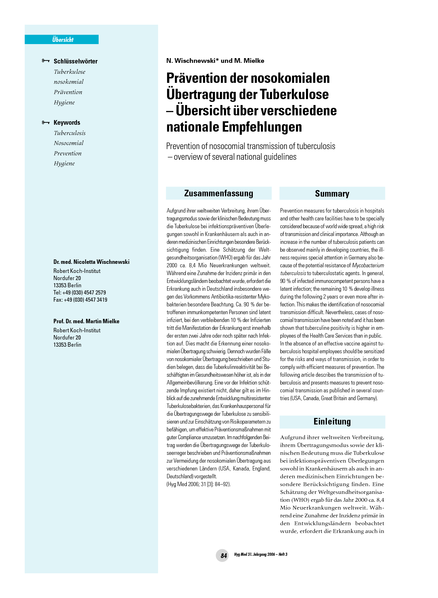Prävention der nosokominalen Übertragung der Tuberkulose - Übersicht über verschiedene nationale Empfehlungen
Prevention of nosocominal transmission of tuberculosis - overview of several national guidelines
Hyg Med 31. Jahrgang 2016 - Heft 3


